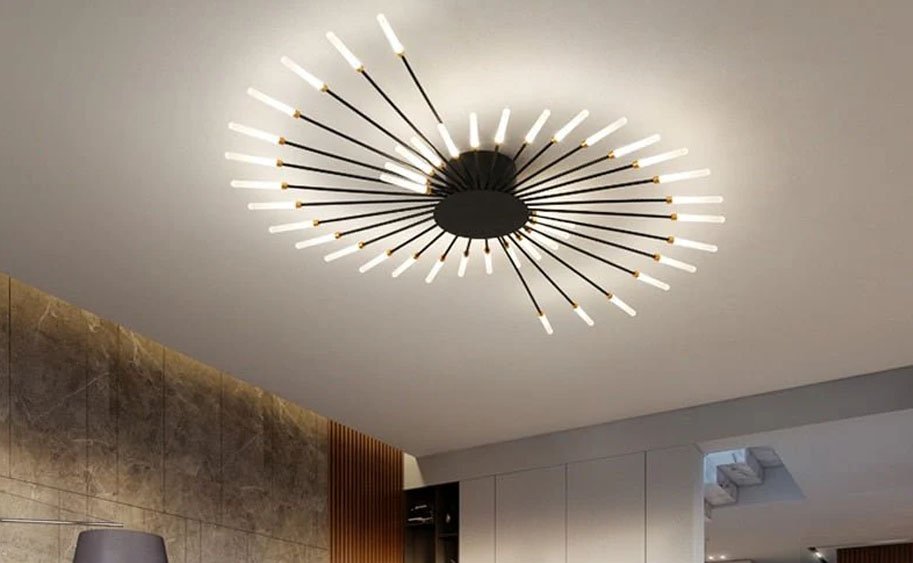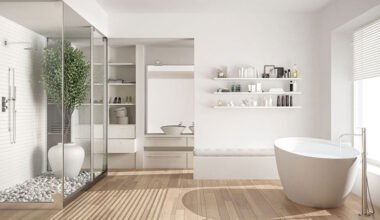Ceiling lighting sets the tone for how a space feels. The right fixtures add dimension, depth, and character while balancing form with function. When style meets contrast, lights can transform an ordinary ceiling into a focal point. Let’s explore how material and color choices shape striking ceiling lighting styles.
Classic and Modern Mix
The charm of designer ceiling lighting often lies in how traditional forms merge with contemporary finishes. A crystal chandelier with matte black hardware feels timeless yet refreshed, blending elegance with edge. Brass paired with frosted glass introduces warmth without overwhelming minimal layouts. The result is a harmony between old-world craftsmanship and present-day appeal.
Material contrast plays a powerful role in setting the mood. Smooth metal against textured glass creates both visual and tactile interest. Linen drum shades framed in polished nickel highlight a refined balance. By embracing opposites, lighting design feels intentional and thoughtfully curated.
Light and Dark Balance
Contrast in color works as effectively as contrast in shape. A bright white overhead fixture accented with dark bronze hardware captures immediate attention. A soft neutral pendant trimmed in black brings depth that does not overpower the room. The mix of light and dark keeps the eye moving across the ceiling.
This approach suits both small and large spaces. In compact areas, dark accents prevent monotony in an all-white scheme. In expansive rooms, the tension between pale shades and strong finishes defines boundaries. Lighting becomes both decorative and directional through the color interplay.
Metallic Contrast
Metallic finishes elevate the sophistication of overhead fixtures. Pairing polished chrome with brushed brass introduces dimension and avoids a flat appearance. Shiny elements reflect light, while matte tones ground the look. This contrast ensures the fixture remains engaging from every angle.
Even subtle shifts in metallic tone matter. Antique gold set against satin nickel provides a lived-in quality with polish. Copper combined with steel adds warmth while maintaining modern restraint. These pairings reveal how finish choices can completely reshape ceiling lighting impact.
Glass and Metal Pairings
Glass adds airiness, while metal frames create structure. A smoked glass pendant framed in gunmetal delivers intrigue with softness. Clear globes suspended from brass stems keep the design approachable yet chic. The tension between fragility and strength defines the visual drama.
Frosted glass offers a different effect by muting glare. When placed in bold geometric frames, the look feels architectural and commanding. Ribbed or patterned glass brings in texture without cluttering the ceiling. Together, glass and metal combinations remain versatile across multiple design styles.
Texture Contrast
Texture introduces subtle but meaningful layers in overhead fixtures. A rough-hewn wood beam fixture accented with smooth iron brackets makes the rustic design feel elevated. Linen shades against metallic bases bring tactile variation that draws the eye. Contrasting textures keep a space from appearing flat or monotonous.
Handwoven rattan paired with polished finishes provides a casual yet refined effect. Hammered metal fixtures combined with clear glass highlight artisanal quality. Each texture tells its own story, but contrast ensures balance. These thoughtful choices reinforce character while keeping the lighting approachable.
Bold Colors
Sometimes, contrast comes from bold color instead of muted tones. A deep navy pendant against a neutral ceiling becomes a striking accent. Burgundy or emerald shades framed in metallic finishes turn functional fixtures into artful statements. Colorful illumination emphasizes personality and brightens the mood.
Careful balance is key when adding vivid tones. Strong saturation can dominate a space, but paired with neutral materials, it feels intentional. Pops of color work best in transitional spaces like dining rooms or entryways. The contrast sparks energy without requiring a full redesign. Bold shades also invite creativity, making ceilings an unexpected canvas for expression.
Fixture Coordination
Ceiling surfaces strongly affect how light is perceived. Dark wood ceilings look best with lighter fixtures that add brightness, while white plaster ceilings work well with darker accents for definition. Choosing fixture materials that match the ceiling finish creates continuity, and opposite tones can highlight contrast.
Coffered ceilings look striking when paired with bold chandeliers in distinctive finishes. Beamed ceilings achieve balance with soft, diffused light set in neutral frames. Smooth drywall ceilings provide the perfect backdrop for metallic details to stand out. Treating the ceiling as part of the overall palette brings the design together.
Designer ceiling lighting becomes striking when materials and colors are thoughtfully contrasted. Pairing metal with glass, balancing bold colors with neutrals, and mixing textures with smooth finishes all create dimension. The right fixture goes beyond function, becoming a statement piece that enhances the character of a room. This thoughtful approach ensures ceilings contribute style as much as illumination.



